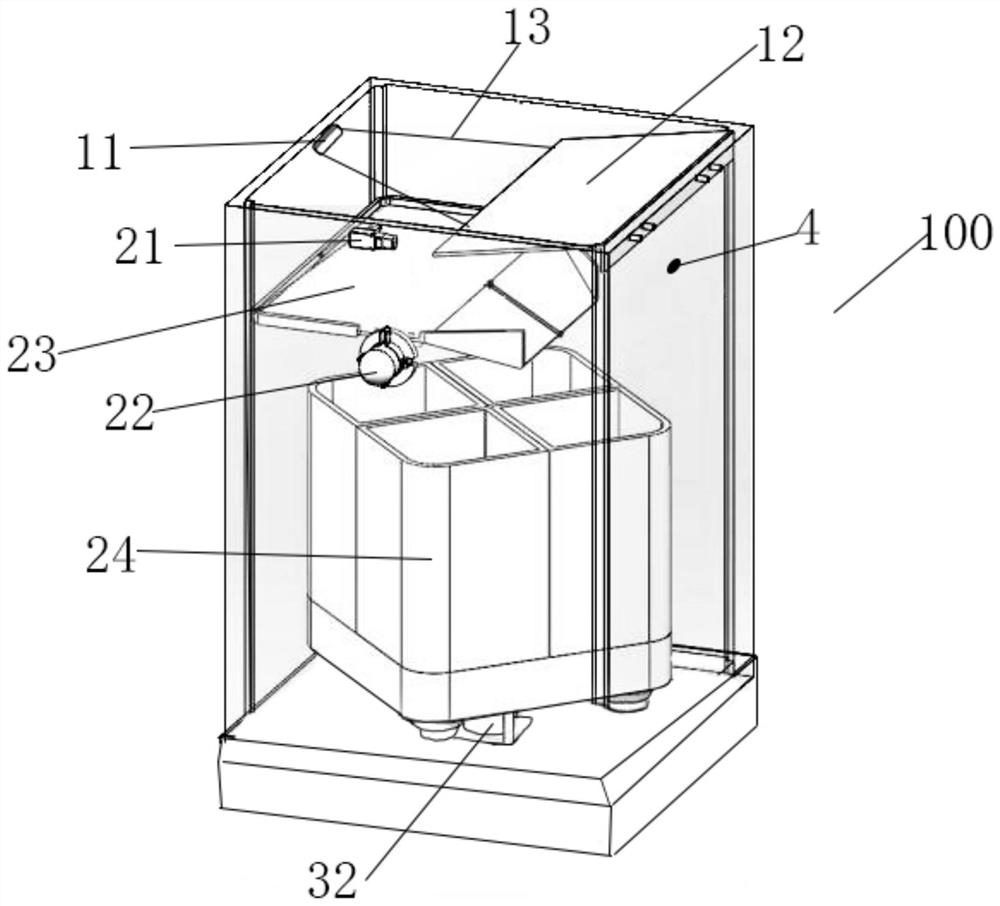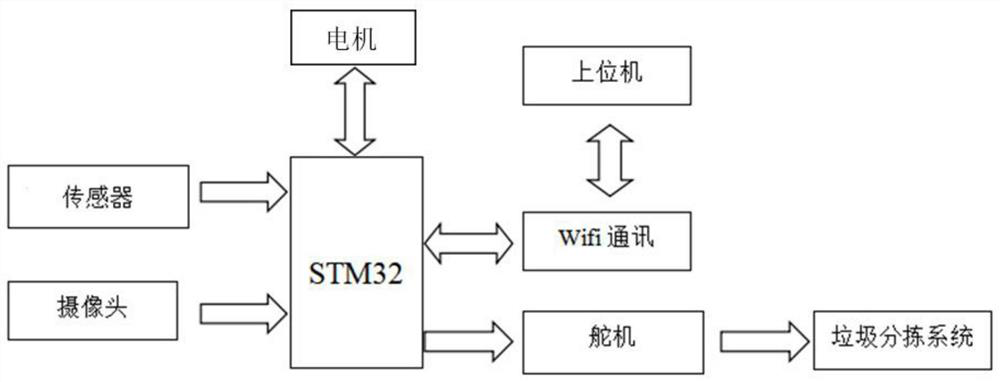Recognition device and recognition method for garbage classification
A technology of garbage classification and identification device, applied in the direction of trash cans, garbage collection, household appliances, etc., can solve problems such as affecting physical health, increasing human and material resources, environmental pollution, etc. effect of meaning
- Summary
- Abstract
- Description
- Claims
- Application Information
AI Technical Summary
Problems solved by technology
Method used
Image
Examples
Embodiment 1
[0031] This embodiment provides an identification device for garbage classification, such as Figure 1-2 As shown, comprise garbage can 100, and garbage can is provided with garbage drop opening, also comprises drop-in area, identification area, sorting area; Drop-in area is positioned at identification area top, and identification area is positioned at sorting area top; Drop-in area includes motor 11, throwing board 12. The motor 11 is connected to the delivery board 12 through the traction mechanism 13; the identification area includes a camera 21, a rotating shaft 22, a storage board 23, and a sensor; the camera 21 is arranged on the storage board, the rotating shaft 22 is connected to the storage board 23, and the sensor is arranged in the identification area Inside; the sorting area includes a plurality of garbage bins 31 and a steering gear 32, and a plurality of garbage bins 31 are arranged along the axis of the steering gear 32.
[0032] It should be noted that in this...
Embodiment 2
[0060] This embodiment provides an identification method for garbage classification, such as Figure 5 shown, including steps:
[0061] S11. Acquiring garbage information put in through the garbage outlet;
[0062] S12. Classify and process the garbage according to the acquired garbage information, obtain a processing result, and send a control instruction corresponding to the processing result according to the processing result;
[0063] S13. Control the rotation of the garbage can according to the control instruction, so that the garbage falls into the garbage can corresponding to the garbage.
[0064] A garbage classification identification method disclosed in this embodiment is based on the garbage classification identification device in the first embodiment.
[0065] Also include before step S11:
[0066] S10. Judging whether there is a person approaching the trash can.
[0067] The infrared sensor installed on the outside of the trash can detects whether there is a p...
Embodiment 3
[0078] A garbage classification identification method provided in this embodiment differs from Embodiment 2 in that:
[0079] After the single-chip microcomputer of this embodiment processes the image acquired by the camera, it also includes:
[0080] Classify and process the garbage information acquired by the sensor.
[0081] Specifically, the capacitance sensor, metal sensor, and temperature and humidity sensor set in the identification area detect the capacitance, metal strength, temperature, and humidity of the garbage respectively, and transmit the detected information to the single-chip microcomputer. Then, kitchen waste and recyclable garbage can be distinguished by comparing the capacitance value and dryness and humidity of the garbage; harmful garbage can be separated by detecting whether the garbage contains metal and the capacitance value; recognition accuracy.
[0082] This embodiment improves the accuracy of the combined use of the neural network algorithm and ...
PUM
 Login to View More
Login to View More Abstract
Description
Claims
Application Information
 Login to View More
Login to View More - R&D
- Intellectual Property
- Life Sciences
- Materials
- Tech Scout
- Unparalleled Data Quality
- Higher Quality Content
- 60% Fewer Hallucinations
Browse by: Latest US Patents, China's latest patents, Technical Efficacy Thesaurus, Application Domain, Technology Topic, Popular Technical Reports.
© 2025 PatSnap. All rights reserved.Legal|Privacy policy|Modern Slavery Act Transparency Statement|Sitemap|About US| Contact US: help@patsnap.com



